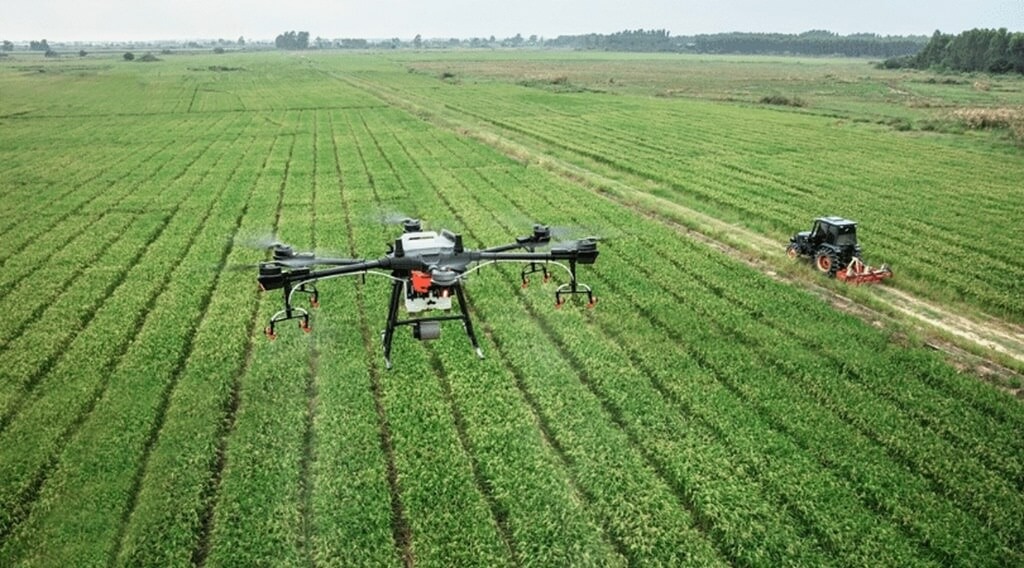Discover the advantages of drone inspections over traditional manual methods in our latest blog post.
Learn how drones enhance safety, efficiency, cost-effectiveness, and accessibility in inspections, revolutionizing the industry. Explore why drones are the future of inspections.

When it comes to gathering precise site data, aerial surveys are significantly more successful than physical inspections.
Drones and unmanned aerial vehicles (UAVs) take airborne inspections to the next level. These little flying drones have entirely automated the surveying procedure, making life easier for AEC professionals.
Definition Of Drone Inspections
Here is a brief comparison to help you grasp the fundamental difference between drone inspections and manual surveys.
Drone inspections involve the use of unmanned aerial vehicles (UAVs) to perform visual assessments and collect data on major assets for maintenance.
These checks improve efficiency, shield inspectors from hazardous circumstances, and enable remote monitoring via a drone’s camera.
Inspection drones are revolutionizing manual inspection operations, allowing inspectors to acquire inspection data faster while eliminating slower manual stages that put them in danger.
Manually examining a cell tower, for example, may require climbing several floors in the air on a tower to examine a guy wire.
Significance Of Inspection Processes
Drone inspections are important because they entail the use of unmanned aerial vehicles (UAVs) to perform visual checks and collect data on major assets for maintenance.
These checks improve efficiency, shield inspectors from hazardous circumstances, and enable remote monitoring via a drone’s camera.
Commercial drone inspections have the potential to greatly enhance corporate operations across industries. These checks improve precision, make the workers safer, and boost efficiency.
Drone inspections have the potential to significantly decrease the high costs, safety concerns, and time required with traditional inspection methods.
Advantages Of Drone Inspections
Drone inspections provide several advantages over typical manual inspection techniques.
Drones may be programmed to navigate into tight or risky spaces, allowing inspectors to examine minute details. Some of the advantages of drone inspections are given below:
Efficiency And Speed
Companies and other organizations are increasingly resorting to drones to evaluate their infrastructure, mostly for cost-cutting reasons.
Drone aerial inspections are frequently speedier and can minimize preparation time, equipment, and labor.
Traditional manual inspections necessitate the assembly (and subsequent disassembly) of scaffolding, the preparation of harnesses, and the verification that the air in the area is breathable.
However, using a drone eliminates the need for these preparations, which not only improves the efficiency of the inspection process by saving time and resources that could be utilized for other duties but also directly saves money.
Cost-Effectiveness
Drone inspections save money in a variety of ways. When compared to alternative approaches, they can save 30 to 50% of the cost and time.
When we compared drone inspection time to equivalent manual inspection time across the four sites, we saw a 97% improvement in inspection efficiency.

Cost reductions owing to efficiency increases varied from $1074 to $1717 per MWdc, with an average cost savings of $1254/MW3.
Quadintel estimates that the worldwide drone inspection and monitoring market will be worth $7.47 billion in 2021 and will increase to $35.15 billion by 2030. This reflects an increasing awareness of the cost-effectiveness of drone inspections across sectors.
Safety Improvements
Drone inspections greatly increase safety in a variety of ways. They eliminate the need for humans to access dangerous places, lowering the risk of accidents and injuries.
Drones can collect data on the status of an area in tight places where the risk of asphyxiation is high, removing the need for humans to access the space.
Similarly, in scenarios involving work at height, drones may be used to survey rooftops, towers, and other buildings, avoiding the need for personnel to climb ladders or utilize scaffolding.
Drones can provide a rapid and effective approach to checking and scanning difficult-to-access areas. This can save time and costs while also reducing the requirement for scaffolding or other equipment.
Comparison: Drone vs. Manual Inspections
When it comes to obtaining precise site data, aerial surveys are significantly more successful than hand inspections.
Drones or unmanned aerial vehicles (UAVs) take airborne inspections to the next level. These little flying drones have entirely automated the surveying procedure, making AEC professionals’ lives easier.
Here is a brief comparison to help you grasp the fundamental differences between drone inspections and manual surveys.
Precision And Accuracy
Drones provide several sophisticated features that physical site visits just cannot match. The accuracy and quality of a building site map or model for a project may make or break its usability. Drones are equipped with a variety of technologies, including:
- Mapping
- Thermal sensors
- High-Resolution imaging
- 4K Video Quality
- 3D digital visualisation
Drone inspections employ GCPs, or ground control points, to pinpoint the exact survey position while hovering in the air for better data accuracy.
Furthermore, the video is geotagged, dependable, and easy to handle in a BIM application model or photogrammetry program.
Manual inspections take time and can potentially last weeks, depending on the size of the site. Drones allow you to cover hundreds of acres in one hour.
Accessibility To Hard-to-Reach Areas
Drones provide a more cost-effective, quicker, and safer approach to assessing any type of structure.
Most buildings, particularly those with intricate patterns and roofs, are difficult to evaluate using standard methods. Because they require specific climbing equipment as well as trained and professional staff, the cost is greater.
Drones can enter limited places or difficult-to-reach regions of complex construction for a fraction of the cost, time, and risk.
This enables inspection of locations that would otherwise be impossible to access using traditional methods. In certain circumstances, workers’ access to surfaces is restricted.
As a result, gathering useful data from these places has become difficult. Drones, on the other hand, may fly as close to the subject as is feasible while capturing high-resolution photographs.
Data Quality And Analysis
Drone inspections have transformed the data collection process, providing a degree of precision that is often superior to manual inspection.
Drones or unmanned aerial vehicles (UAVs) have entirely automated the surveying procedure, making it easier for experts.
In one study, drone data collection was shown to be up to 96% more accurate than traditional ground-based data collection methods.
Above mentioned case study investigates why employing drones for data collection makes drone inspections safer, more accurate, and more efficient than manual inspections.
Applications Of Drone Technology In Inspections
Drone technology has found widespread use in inspections across a wide range of industries. Here are a few examples of major applications:
Construction Inspection
Drones are used for surveying and inspection reasons, such as initial site survey and measurement, construction mapping and 3D modeling, progress monitoring, and ensuring construction site security and upkeep.
Here are some of the advantages that drones provide to construction companies:
- Increased accuracy in reporting
- Increased regularity of reporting
- Improving safety conditions by quickly spotting problems onsite
- Improving the efficiency of operations
Infrastructure Inspections
Drones may be flown up the cell tower to collect all of the visual data required by the inspector to complete their inspection.
The ability to acquire correct data rapidly and cheaply is the most significant advantage of deploying drone inspections for infrastructure. Some of the inspections are as follows:
- Utility towers
- Wind turbines
- Bridges
- Air transport infrastructure, including airstrips and air towers
- Railways
- Roads
A further benefit in instances where inspectors are at risk, such as tower or bridge inspections, is the ability to acquire crucial visual data without the inspector being physically there.
Power Generation Inspections
Power businesses deal with a variety of assets that must be inspected regularly. These include assets used in coal-powered energy production, such as boilers and chimneys, as well as those used in greener power sources, such as wind turbines and other hydropower plant components.
- Coal-fired boilers
- Nuclear power plants
- Heat recovery steam generators
- Waste incinerators
- Wind turbines
- Hydropower plants
- Solar panels / solar panel farms
- Transformers
Drone technology is revolutionizing power plant inspections. The primary advantages of a drone inspection over a traditional inspection, as in many inspection circumstances, are that it keeps the inspector out of harm’s way and saves money by eliminating the need to construct scaffolding or other temporary infrastructure to support inspection activities.
Roof Inspections
Drones like the DJI Phantom 4 Pro are considered best for roof inspections. Here are some of the uses of drones for roof inspection:
- Roofs
- Site (overall condition of the site)
- Buildings and related infrastructure on an insured site
- Car accident scenes
- Farms/crop damage
- Other assets that could be damaged following a natural disaster
When a natural catastrophe strikes, the demand for trained commercial drone pilots in a given region may increase, with insurance firms scrambling to acquire enough pilots to meet their data collection requirements.
These applications not only enhance inspection efficiency and speed but also improve safety by minimizing the need for human inspectors to access potentially dangerous areas.
GetResponse is a game-changer for email marketing! It offers powerful automation, user-friendly tools, and excellent deliverability—making campaigns seamless and effective. Plus, their analytics help optimize performance effortlessly. Great news! Now you can get 30% off until April 5th. Perfect time to upgrade or try it out! 🚀 Follow the link.